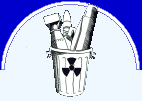


 |
 |  | ||||
|
|
|
|
| |||
| vous etes ici Homepage > News > External sources > Missile killer scores a first Target hit after leaving booster. | |
|
Missile killer scores a first Target hit after leaving booster. Raytheon elated. Published 19 November 2005 Published: 11.18.2005 ====== Standard Missile-3 Description: High-velocity, 21-foot-long missile featuring a third-stage rocket motor, satellite guidance and a nonexplosive, "hit-to-kill" warhead. Use: Fired from ships to intercept and destroy short- and medium-range ballistic missiles in space, as part of the U.S. Missile Defense Agency’s Aegis Ballistic Missile Defense program. Cost per unit: Not available. ====== A missile built by Raytheon Missile Systems tracked and hit the warhead of a ballistic missile in space over Hawaii Thursday morning, as hundreds of Raytheon workers in Tucson watched via satellite and cheered. The intercept was the sixth successful test out of seven attempts for the Standard Missile-3, part of the Aegis ship-based missile-defense system, since tests began in 2002. It was the first test involving a "separating" target - a warhead that had already parted from its booster rocket, the Pentagon’s Missile Defense Agency said. "Hitting something like this in space is trickier than when it’s still attached to its large rocket motor," said Richard Lehner, a spokesman. The reaction was raucous in Tucson. "We’re all screaming and hollering," Edward Miyashiro, Raytheon’s vice president for naval systems, said Thursday afternoon. About 400 Raytheon engineers and other workers watched the test-flight video live in an auditorium at Raytheon’s plant near Tucson International Airport. Raytheon, Southern Arizona’s largest private employer with more than 10,000 workers, is the prime contractor on the Standard Missile-3, or SM-3. Lockheed Martin is the prime contractor for the overall Aegis Weapon System. Thursday’s test began when a medium-range, separating target missile was launched about 11 a.m. Arizona time from the Pacific Missile Range Facility in Kauai, Hawaii. The Pearl Harbor-based cruiser USS Lake Erie detected the missile, and about four minutes later launched the SM-3 interceptor. Six minutes after launch, the interceptor missile hit the target warhead more than 100 miles in space above the Pacific Ocean. The intercept used "hit to kill" technology, which means the target warhead was destroyed when the interceptor missile collided directly with the target. Before Thursday, tests were against unitary, or nonseparating, targets similar to Scud-type ballistic missiles. Miyashiro noted that the test was conducted under "operational" "It’s about as real as it gets," Miyashiro said. The successful test was critical as Congress mulls the defense budget. Raytheon has delivered nine of the current Standard Missile Block 1 version since last year and expects to deliver two more by the end of the year, the company said. Neither the military nor Raytheon has released estimates of each missile’s cost. "Our hope is that, with our continued success and having the ability to do this very hard mission, Congress decides to buy more," Military analyst John Pike, director of GlobalSecurity.org, said the success of the missile tests bodes well, but it’s unclear whether the government will buy enough missiles to form a reliable shield. "The real question isn’t ’How well is it doing?’ The question is, ’Am I still worried about North Korea’s nuclear missiles?’ " Pike said. Contact reporter David Wichner at 573-4181 or Reuters news service contributed to this
|
Also in this section | ||||||||||||||||||||||||||||||||||||||||||||||||||||||||||||||||||||||
| visites : | 1234920 |
|
Site powered by SPIP
design et fonction Easter-Eggs |